
Sofas – they’re our second home in a home. You can’t deny the feelings of joy and comfort whenever we sit on them or sprawl out for a cat nap. In fact, the relationship with our sofa extends beyond any other furniture piece in the house – they were there with us for our meal sessions, movies, gossip and so much more.
Having stayed with us through the ups and downs of life, we should pamper our sofa by giving it a new refreshed look, either by washing its existing slipcovers or getting some new slipcovers for it altogether. I mean, that’s also the best way to take care of our sofa and keep it looking lively in the long run, right?
Depending on the fabric of your sofa slipcover, there are different ways to care for it. The fabrics’ ability to be machine washed is one of the things I consider whenever picking a sofa slipcover because that very well means the difference between hours of furious (but careful) scrubbing or a quick bung in the washing machine.
To help you prolong the life of your slipcover, we’re listing out some ways you can care for your slipcover according to its material. For starters, here are some important things to keep in mind when you do decide to wash your slipcovers (bear in mind that each fabric has its own way of being taken care of but more of this can be found down below) :
- Wash all your slipcovers in one go to ensure that they all come and leave in the same colour!
- Don’t crowd your washing machine – if it’s only the slipcovers that can be fitted in, then that’s it. No shirts, jeans or socks!
- Check the components of your detergent before using it because there may be a bleaching agent hidden in them (even if it doesn’t say “bleach” outright, hydrogen peroxide is organic but has bleaching properties for example)
- Turn your covers inside out when washing them – it’s an attempt to keep the colours as they are.
- Zip the zippers! because leaving them swirling around the waashing machine may snag and cause some damage to your machine (and covers)
- If fading happens, breathe! All fabrics are bound to lose some colour as they age (much like our hair colour…) but it’s all part of the charm. Embrace it!
100% Cotton
Cotton has been around with us for a really long time. Fun fact, the Aztecs once used cotton as money for trade.
A versatile fabric that can easily be dyed into various colours, it is no wonder cotton is such a common and important fabric in the industry.

To keep your 100% cotton slipcover looking fresh, it would help to take note of the following:
- Always use cold water for washing. Do not wash cotton fabrics in hot or even warm water.
- Choose the gentlest cycle if you are using a washing machine. No washing this natural fabric violently please!
- Avoid the dryer as this may cause the fabric to shrink.
- Drip dry your slipcovers because that helps to avoid wrinkles too!
- Slip them back on while it’s slightly damp because cotton fabrics naturally shrink a little as they dry.
- Iron with low temperature while it’s damp if you need to but remember, nothing too hot!
If you’re only looking to clean a spot, always test out on an inconspicuous area first and foremost. If there aren’t issues, put some detergent on a wet cloth and press it against the affected area. Keep dabbing at it gently until the spot is cleaned up. Once it’s clean, use a dry cloth or paper towel to help absorb the excess moisture and quicken the drying process.
Polyester / Polyester Blends
Ever wonder why polyester fabrics just seem to last so long? The secret lies in what they’re made of. Polyesters are man-made fabrics that are built to be last, so you might imagine that they are more robust than natural fabrics such as cotton, wool and linen.
And are they?
Well, it’s certainly true in many ways. Polyester fabrics are unaffected by many chemicals, resistant to shrinking and stretching, and are very durable. It won’t be as easy for a cat to puncture a hole into a polyester shirt as opposed to a linen shirt.
 So how do you care for it?
So how do you care for it?
- Wash with cold water. Keep it cool guys.
- Gentle cycles on a washing machine are the best but normal cycles work too.
- No direct heat which means, if you need to iron it, iron on low heat. Pro tip: layer another fabric over the polyester when ironing so there’s a barrier between it and the heat.
- Tumble-dry at low because really, don’t overly dry polyester fabrics as it can cause shrinkage
- Consider steam ironing if you have one
- If you ask us, drip dry is the way to go
If you’re only looking to clean a spot, it’s the same as how you would care for cotton. Use a wet cloth which has some detergent on it and work your way around that horrible spot that’s ruining your covers. dabbing at it gently until the spot is cleaned up. Once it’s clean, use a dry cloth or paper towel to help absorb the excess moisture and quicken the drying process.
Pure Linen
Always looking elegant and having a real rich touch, linen fabric will win the hearts of almost everyone. And by everyone, we mean even our ancestors.
Fun fact, linen was used for mummification in ancient Egypt so these things are the good stuff. If you do a quick history search on linen, you’ll find out that a lot of people back then (and now) preferred Linen because it was a symbol of purity.
And we can’t disagree, but how do you take care of these thin and comfortable (but expensive) fabrics?

- Try to limit machine washing to once or twice a year because they get thinner with each wash.
- If you have to wash them, do it in lukewarm or cold water.
- Use the gentlest cycle on your washing machine.
- Iron on low if required and do it while it’s a little damp.
- Drip dry in shade instead to avoid creases.
- Tumble-dry is possible but do it on the low mode
- If you need to store your linen fabric, make sure it is in a cool and dry place.
- If you’re hand-washing, do not wring, twist or scrub the fabric – you’ll thin it faster
If you’re only looking to spot clean, use a gentle cleaning mix on this natural fabric to keep it looking lively. The formula? 50:50 white vinegar and water. That’s right, simply grab a bottle and prepare a potion of 50% white vinegar and 50% water before shaking them together well. Once that’s done, put a little of the potion on a cotton and dab away.
Velvet Blends
Luxury is made affordable with velvet blends. I especially love touching this fabric because of just how smooth it is. Have you tried it before?
Totally unrelated but the smoothness of this fabric reminds us of red velvet cakes. I suppose that’s how the cake got its name for at least, the velvet part.
When properly taken care of, velvet will last quite awhile and this is obvious when you go to museums. You’ll see that there are plenty of velvet furniture that still looks really good.
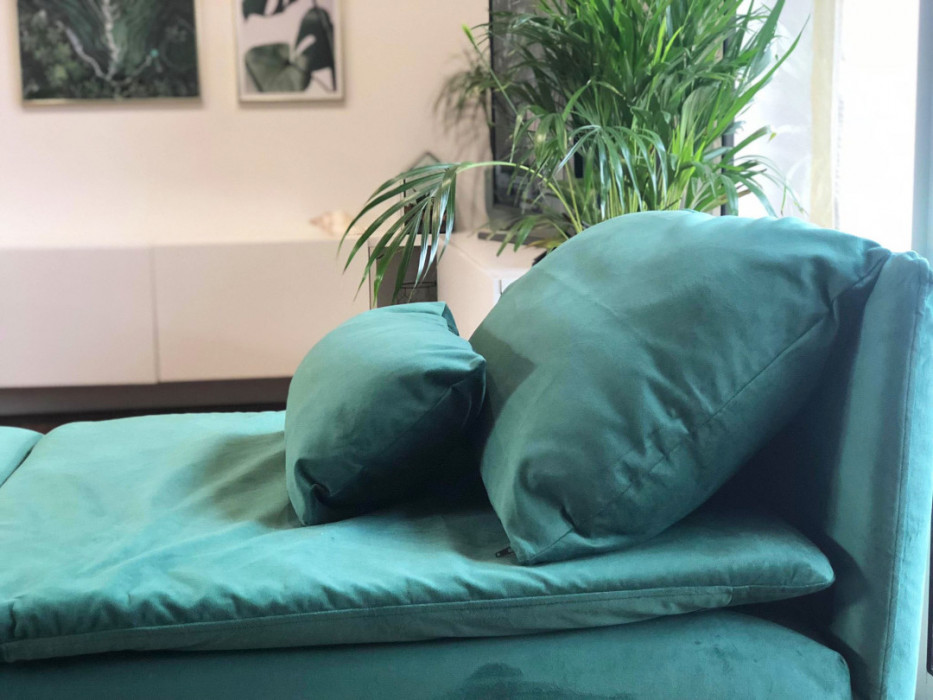
- Remove dirt with a vacuum, brush or a lint roller before sending it to the waters.
- Hand-wash or set your washing machine to a gentle setting with cold water because you need to contribute to keep it expensive-looking.
- Do NOT iron (period).
- Creases can be removed by light steaming – go in the same direction (think of it as petting your cat)
- Brush after steaming if you like that lightly sparkled look of the fabric
If you’re only looking to clean a spot, dab it clean it as soon as you can! Dry stains on a velvet piece are harder to remove and well, I’d get annoyed if there’s a visible black dot on my beautiful green velvet slipcover.
Bycast & Synthetic Leathers
Please do not, and I repeat, do not throw your leather slipcovers into the washing machine. That’s the worst crime you could ever commit!
Before we teach you how to avoid such an atrocious crime, we’re taking a step back because did you know that real leather was once used as wallpaper? I mean, this was back in the 17th century but I’m still in awe.
Anyway, while real leather as well as bycast & synthetic leathers can’t be machine washed, all hope is not lost.

- Get rid of the hard dirt first by vacuuming, brushing or using a lint roller for the surface and the in-betweens.
- Buff your covers to keep the shine.
- Do NOT iron.
- Wait for wrinkles and creases to disappear because they will after being stretched for some time (patience is key my young padawan)
- Send it to a professional cleaner if you need to because they know best
If you’re only looking to clean a spot, do it fast because stains can stay. Do not use an overly wet cloth but one that is damp. You could try mixing water with a little dish-washing detergent and dabbing at the spot but always, always try an unobvious spot to see if it may cause discolouration of any sort.
Liquid Resistant Fabrics
If liquid resistant fabrics had existed when we were kids, we would have been saved from a lot of nagging and punishments from our parents.
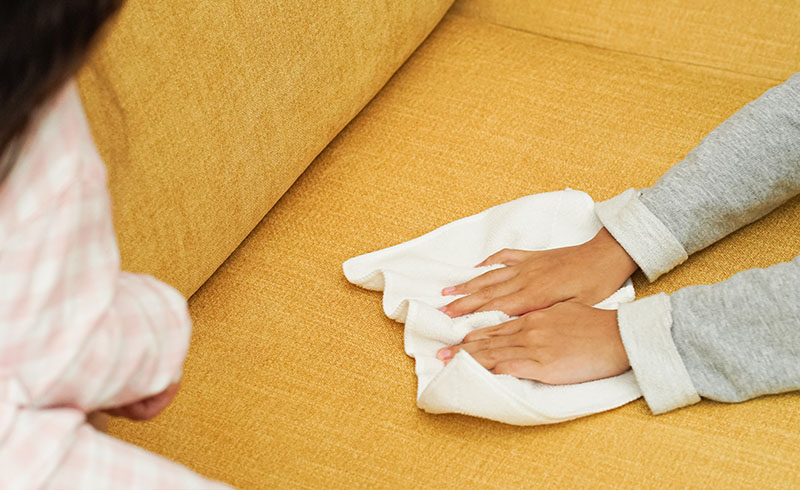
Here are some tips we have to care for a liquid resistant fabric:
- Had an oopsie on the covers and spilt some liquid on the covers? Simply wipe up the spill with a clean towel.
- It’s liquid-proof but not crumb-proof so always vacuum, brush or lint roll whenever necessary.
Though the question is “if it’s liquid resistant, do we need to wash it?” And if yes, how do we even wash it? I mean, wouldn’t washing a liquid resistant fabric be kind of redundant?
Like a good car that gathers dust, you may need to do more than just lint-roll your liquid-resistant slipcover. A good wash always helps to keep it fresh and clean too. Who knows what odors lay hidden within an unwashed slipcover!
However, a word of caution my fellow friends. What makes a fabric liquid-resistant is the coating that is layered above it so if you do intend to wash your liquid-resistant fabrics, make sure to keep count! It is likely that the coating will wear off after a few washes.
But if it is washing that you must do, here’s what we recommend:
- The gentlest cycle and cold water combination for the washing machine is a must.
- Drip dry in shade or tumble dry on low
- Put the covers back on while it’s slightly damp to get the best fit
- No ironing required because it’s wrinkle-resistant!
Most of the time, spot-cleaning should do the trick so don’t fret too much! On that note, we do not recommend the use of spray-on cleaners, but if you must use a spray-on cleaner, make sure to test it in an inconspicuous location first.
Looking for a new slipcover for your sofa but don’t know where or what fabric to choose? Look no further as you’re in the right place and in good hands! Check out our fabric collection here and get some sample swatches delivered to you!











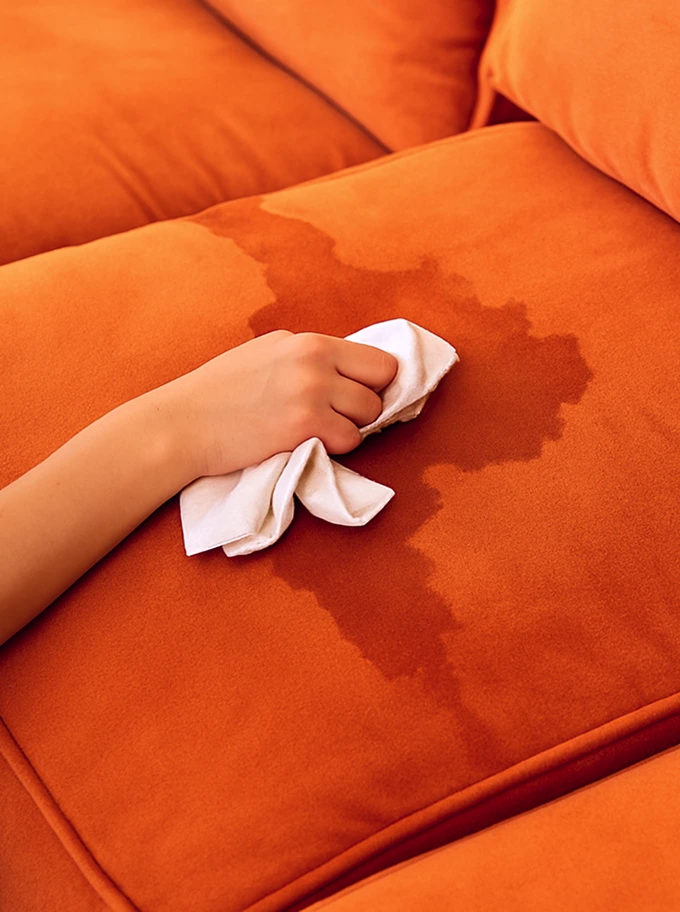
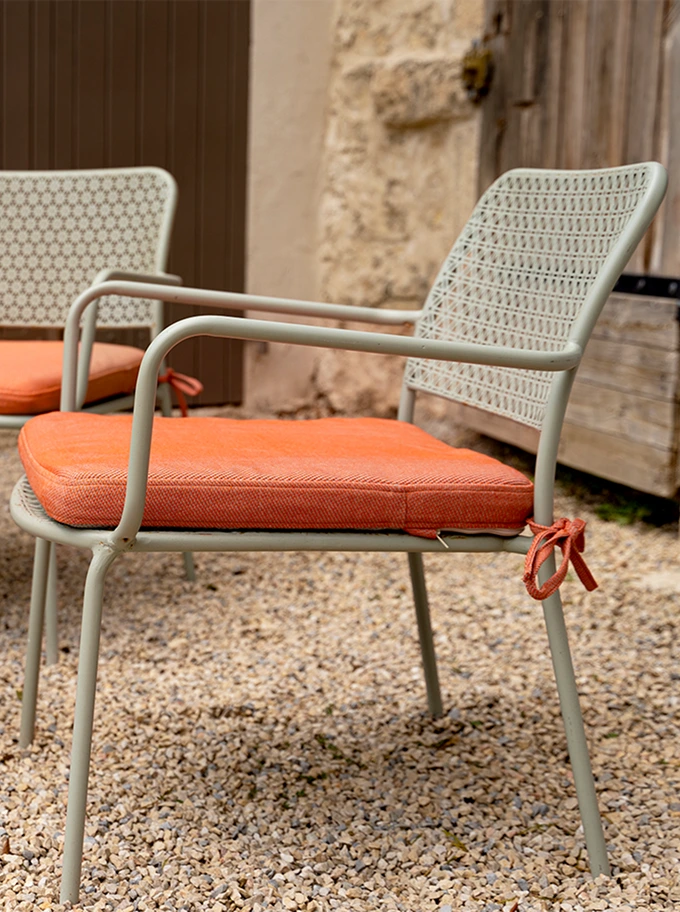
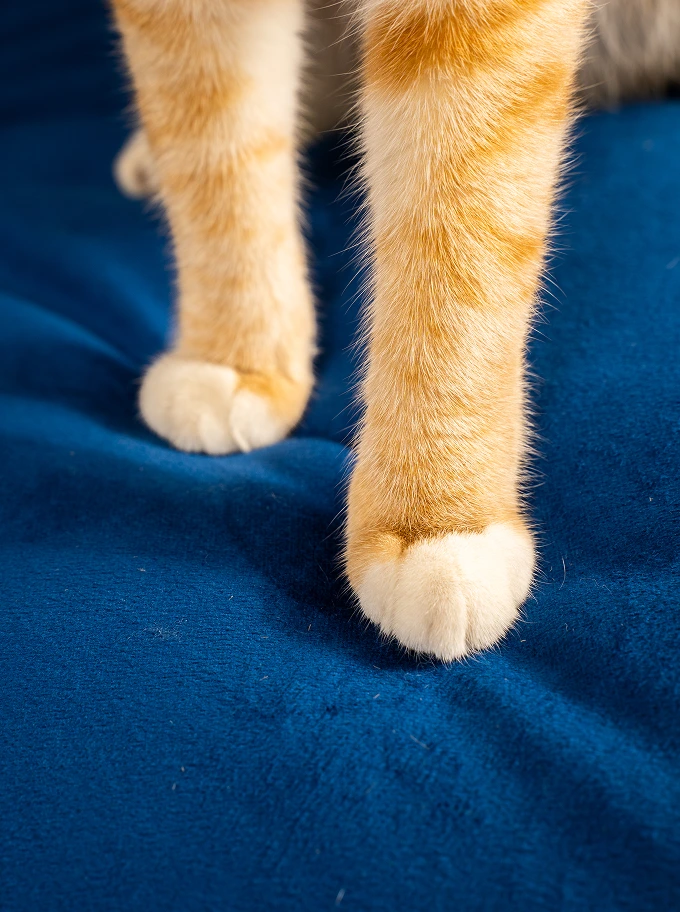
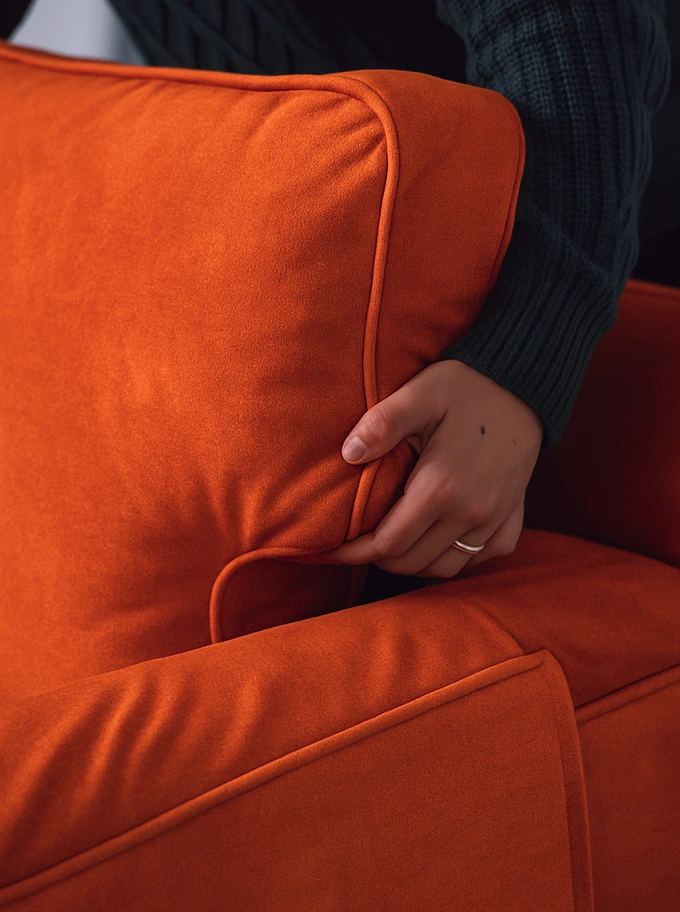
Carla
Oct 22, 2021Do you need to wash the slipcovers when they are new?
Naomi
Oct 22, 2021Hey Carla,
This is completely up to you! There is no real need to wash your covers while they are new – unless it has been dirtied, or if you just like that “fresh-out-of-the-wash” smell. :)
Personally, a trick we sometimes share with our friends is to give the covers a cold rinse + fit them back onto the couch while it is still slightly damp. This is great for older covers once they become a little loose over time (especially if they are made of cotton, linen, or any other natural fibers that are prone to expanding and shrinking over time). Doing this will “reset” the covers back and help them have a better, more snug fit on your couch.